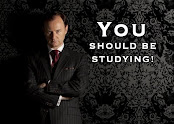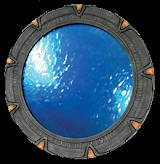Honors Physics concluded their discussion of of lenses with a contrasting of convex and concave lenses and an examination of how object distance affects image properties for these lenses. Tomorrow, we'll look into total internal reflection, which will allow a review of Snell's Law, and dispersion. Friday - lab on lenses and image formation.
Physical Science spent time preparing for tomorrow's lab and reviewing/practicing working with Ohm's Law. Tomorrow's lab will have you experimentally explore Ohm's law and contrast ohmic and non-ohmic materials. At the start of lab tomorrow, we'll spend a bit of time making sure all groups understand how to wire their circuits and checking the circuits before data collection begins, but you should be able to puzzle things out fairly well after today's lab introduction. We'll explore circuits in more depth in the next section and examine more schematic symbols used to describe electrical circuits. There are many and may vary a bit with country and specific electronic fields, but here is fair sampling of the ones that are in common use. Note: you do not have to memorize this diagram. I'll point out which ones you should be familiar with for the MCAS exam.
















